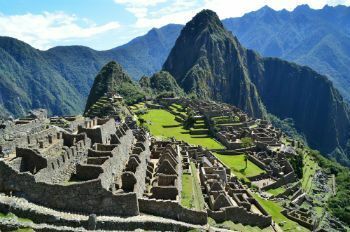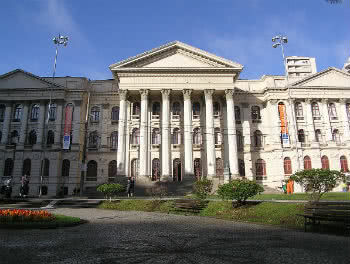The historical heritage represents the material or natural goods that are important in history of a particular society or community.
It can be buildings, ruins, statues, sculptures, temples, churches, squares, or even part of a city, for example, the historic center.
This concept began to be disseminated from the 19th century after the French Revolution (1789).
Importance of historical heritage
These goods were built or developed by societies over time. They are closely related to the identity of the place and represent an important source of current research.
Through the historical heritage, therefore, we can learn about history and everything that surrounds it. For example, the art, traditions, knowledge and culture of certain people.
For this reason, there are currently several bodies that aim at the conservation and preservation of these assets.
Thus, the historical heritage brings together the set of manifestations that were developed over time and that carry symbolic aspects.
According to Decree Law No. 25 of 1937:
"Art. 1st - The national historical and artistic heritage is the set of movable and immovable property existing in the country and whose conservation is of interest public, either for its link to memorable facts of the history of Brazil, or for its exceptional archeological or ethnographic, bibliographical or artistic."
Historical and Cultural Heritage
Allied to the concept of historical heritage is that of cultural heritage. According to article 216 of the Constitution, cultural heritage represents the goods:
“(...) material and immaterial in nature, taken individually or together, bearers of reference to identity, action, memory of the different groups that make up Brazilian society”.
Therefore, cultural heritage can be divided into:
- Material Cultural Heritage: as its name implies, it represents material cultural goods, for example, museums, libraries, universities, etc.
- Intangible Cultural Heritage: also called “intangible heritage”, it brings together various cultural expressions, for example, knowledge, customs, parties, dances, legends, music, etc.
Observation: In addition to the Historical and Cultural Heritage, we can also mention the Artistic Heritage (artistic assets) and the Natural Heritage (natural assets).
Also read about Material and Immaterial Culture.
Brazilian Historical Heritage

In Brazil, the historical heritage is managed by the National Historical and Artistic Heritage Institute (Iphan), which is linked to the Ministry of Culture. It was created in 1937 by Law No. 378 in the government of Getúlio Vargas.
This entity aims to protect and preserve the historical and cultural assets of our country, thus ensuring their permanence.
Brazil is a country of continental dimensions and, therefore, is home to several historical and cultural assets. See below some of them:
- Historic Center of Olinda (Pernambuco)
- Ouro Preto Historical Center (Minas Gerais)
- Historic Center of Salvador (Bahia)
- Pillory (Salvador, Bahia)
- Brasília Urban Development
- Christ the Redeemer (Rio de Janeiro)
- Luz Station (São Paulo)
- Federal University of Paraná (Curitiba)
- Ruins of São Miguel das Missões (Rio Grande do Sul)
Listing of Patrimonial Assets
when the goods are fallen by the responsible agency, this means that they have an estimated historical and cultural value. This intervention aims to preserve the heritage, since after the listing they cannot be demolished or renovated.
However, the listed properties may be subject to a restoration and/or maintenance process without the original characteristics disappearing.
According to the Brazilian Constitution:
"The Public Power, with the collaboration of the community, will promote and protect the Brazilian cultural heritage, through of inventories, records, surveillance, registration and expropriation, and other forms of precaution and preservation".
Historical Heritage of Humanity
UNESCO (United Nations Organization for Culture, Science and Education) is the body responsible for safeguarding the world's historical and cultural heritage. Examples are:

- Coliseum in Rome (Italy)
- tower of Pisa (Italy)
- Egypt's pyramids (Africa)
- Ruins of Petra (Jordan)
- Machu Picchu (Peru)
- Great wall of China
- Eiffel Tower (France)
- Acropolis of Athens (Greece)
- Statue of Liberty (U.S)
- Taj Mahal (India)
Did you know?
August 17 is the “Historical Heritage Day”.
See too: Cultural heritage


